Before the post offices, fulfillment centers, and the ubiquitous blue collection bins we know now, in the early days of the United States, mail was processed within and sent from leased spaces, general stores, or custom houses. Almost 100 years later, postcards and envelopes passed through the halls of neoclassical buildings, many of which are still standing. Now the United States Postal Service (USPS) has reached a major milestone: The organization turns 250 on July 26, 2025. Since its founding, architecture, transportation, and technology have been integral to how the USPS operates. Trace the history of the post office’s built forms, and a narrative of an evolving nation unfolds with it.
In 1775, Benjamin Franklin was installed as the first Postmaster General by the Continental Congress when creating what today is the USPS. This appointment established a formal governing entity over the delivery of written correspondence and news among what was then the 13 colonies and later the United States of America. Ever since, buildings have been a key part of the post office story, from evolving styles to big-name architects taking commissions to create impactful places for the sorting of and distribution of mail.
“The Postal Service has been around for 250 years, and we’ve always needed buildings to conduct our business,” Stephen Kochersperger, USPS historian, told AN. “Over time [the post offices] went from being just utilitarian, generally in leased spaces, to become almost like secular cathedrals, places of democracy. I think the lesson that we’ve learned is that civic buildings can also be beautiful works of art.”
A Classical History
While the programmatic requirements of a post office are less rigid than a federal courthouse or a legislative assembly, the designs of post offices and other buildings operated by the USPS share a telling of history centered in time and place. After decades of operating out of houses and hotels, when the USPS began building purpose-built post offices in the middle of the 19th century, many were grand buildings realized in a uniform classical style.
“We see so many of the early buildings in the neoclassical style—that was projecting power and authority,” Kochersperger explained. “That’s how Americans wanted to be seen at that time.”
By the mid-1800s, the population of the country had ballooned and was continuing to expand, leading to more towns and larger cities, and an increased need for post offices. The Office of the Supervising Architect was created within the Treasury department in 1852, giving way to the establishment of a “federal symbolic presence,” as Noel Roman, historical preservation architect at the USPS, told AN. In response, freestanding buildings were built in Greek Revival and Renaissance styles. Some had colonnades lining their primary facade, while others were squatter, though still adorned with ornate cornices. James Knox Taylor, supervising architect from 1897 to 1912, is credited with designing hundreds of federal buildings. For the USPS, Taylor worked on projects from coast to coast.

Architectural styles have come into and fallen out of fashion throughout the history of the USPS, particularly as the number of post offices rose to 28,498 in 1860, from a mere 75 in 1790. Today, the USPS manages over 30,000 post offices, though more than 75 percent of them are leased from outside owners.
In 1841, the postal service moved into a building specifically designed to serve as its headquarters. The architect tapped for the task was Robert Mills, who delivered a Greek Revival facade for the headquarters. (He went on to design the Washington Monument.) The USPS housed its administrative offices in the building until the late 19th century, when it decamped to a new granite building designed by Willoughby J. Edbrooke in Romanesque Revival style.
From the WPA to an Interest in Modern Styles
In the 1930s, the Works Progress Administration (WPA) commissioned post office projects across the country. In addition to the construction projects for the USPS, the WPA was also behind a series of murals for post offices that asked for depictions of an “American scene.” The paintings, more than 1,000 of which remain in situ, show people farming and at play and working in rural and urban settings.
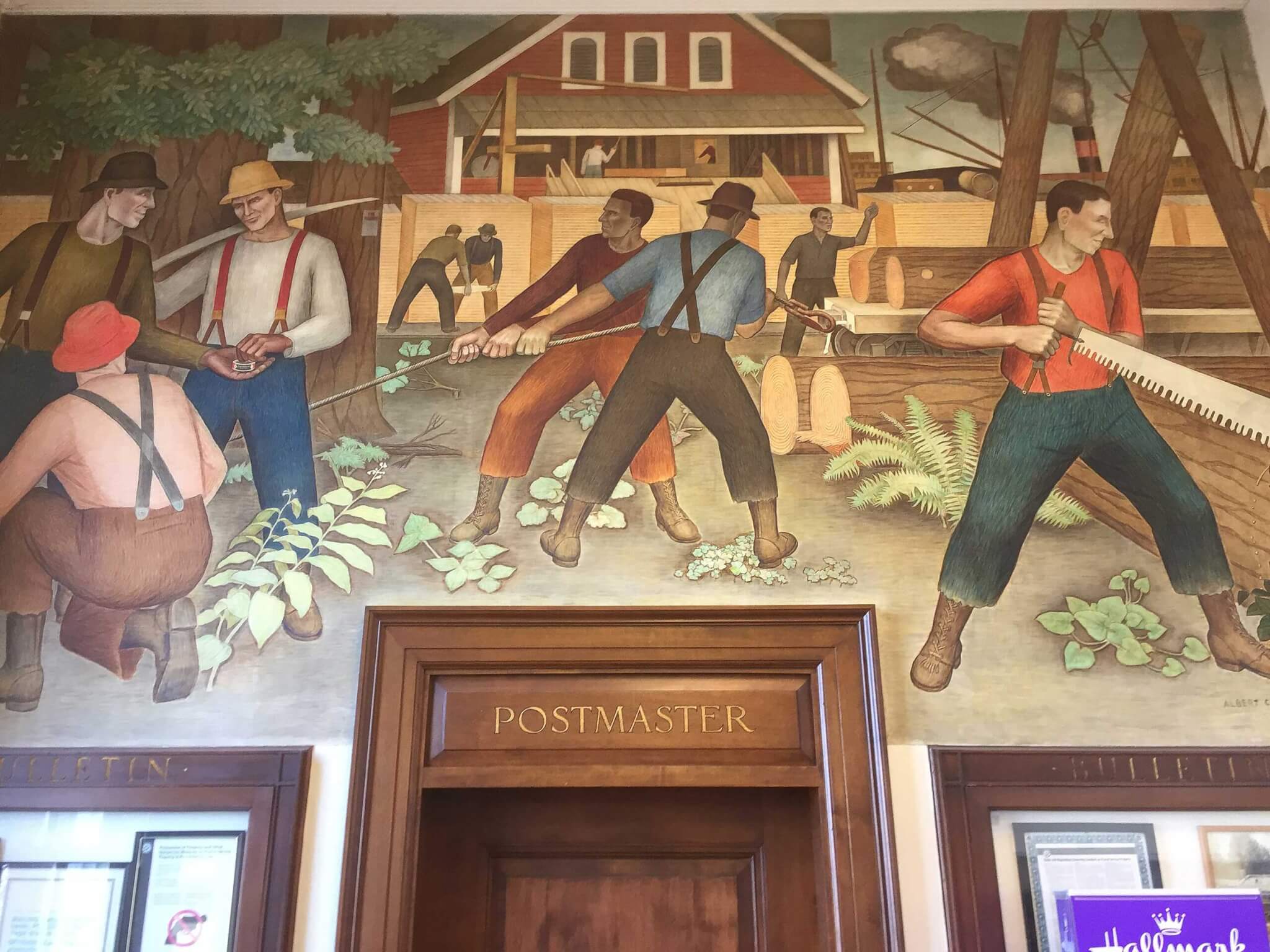
During the same era, art deco was taking hold. Buildings flashed gilded elements, aluminum reliefs, and smoothed concrete facades. In Hollywood, under the WPA, Claud Beelman designed a post office with fluted elements and decorative window grills. Another quintessential example of art deco architecture is the Miami Beach Post Office, a subtly pink building with a circular form adorned with glass blocks and topped with a cupola. The post office still stands as a reflection of its time and place.
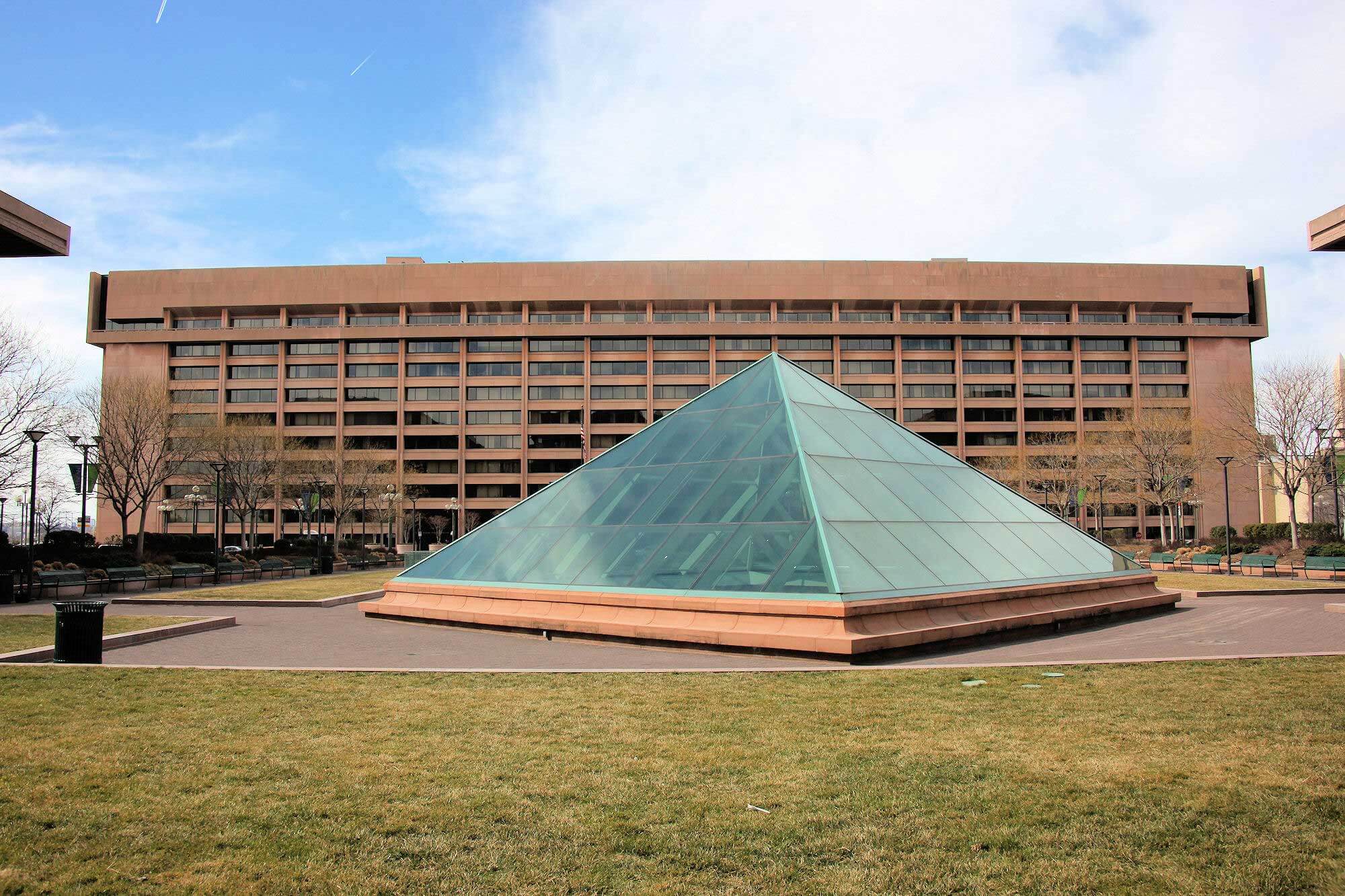
Interest in modernism and the International Style took over during the postwar period, when it wasn’t uncommon for post office buildings and other USPS-operated structures to utilize contemporary designs. In the 1950s, architect I. M. Pei, working for Webb & Knapp, designed a master plan for L’Enfant Plaza in Washington, D.C., a grouping of four commercial buildings. One of these buildings, designed by Czech American architect Vlastimil Koubek in the 1970s, still serves as the headquarters of the USPS today. Its gridded, concrete form establishes its design as a striking example of Brutalism.
In 1996, President Bill Clinton issued an executive order directed federal agencies to prioritize historic buildings and districts when locating new federal facilities. This ensured post offices would remain a part of town and city life. Since then, a reverence for historic preservation has only strengthened.
In the early to mid-20th century, changes in the federal government, often with help from AIA lobbying, led to private architects being able to bid for commissions to design post offices. Since then, a roster of big names have put their stamp on Main Streets and downtowns. In Columbus, Indiana, where nearly every block is home to a modernist masterpiece, it’s fitting that the city’s post office is designed by Kevin Roche. In Palm Springs, California, another modernist mecca spot, the former Amado Post Office Building shied away from standard classical architecture; instead, its builder opted for a facade with expansive glazing and cast concrete arches. Frank Lloyd Wright is behind a post office located within the Marin County Civic Center in California. The circular building marked by its rounded awning was Wright’s only commission for a U.S. national government facility.
Post–Post Office Futures
Demographics, real estate, and mail-sorting technology changes are constantly reshaping the building needs of the USPS. Many postal facilities have been sold or repurposed, which contributes to a growing trend in giving former post offices second lives. Today, both Mills’s and Edbrooke’s historic buildings in Washington are operated as hotels. In Chicago, Gensler converted the city’s main post office, and in New York, the James A. Farley Building was transformed into Moynihan Train Hall, led by SOM.
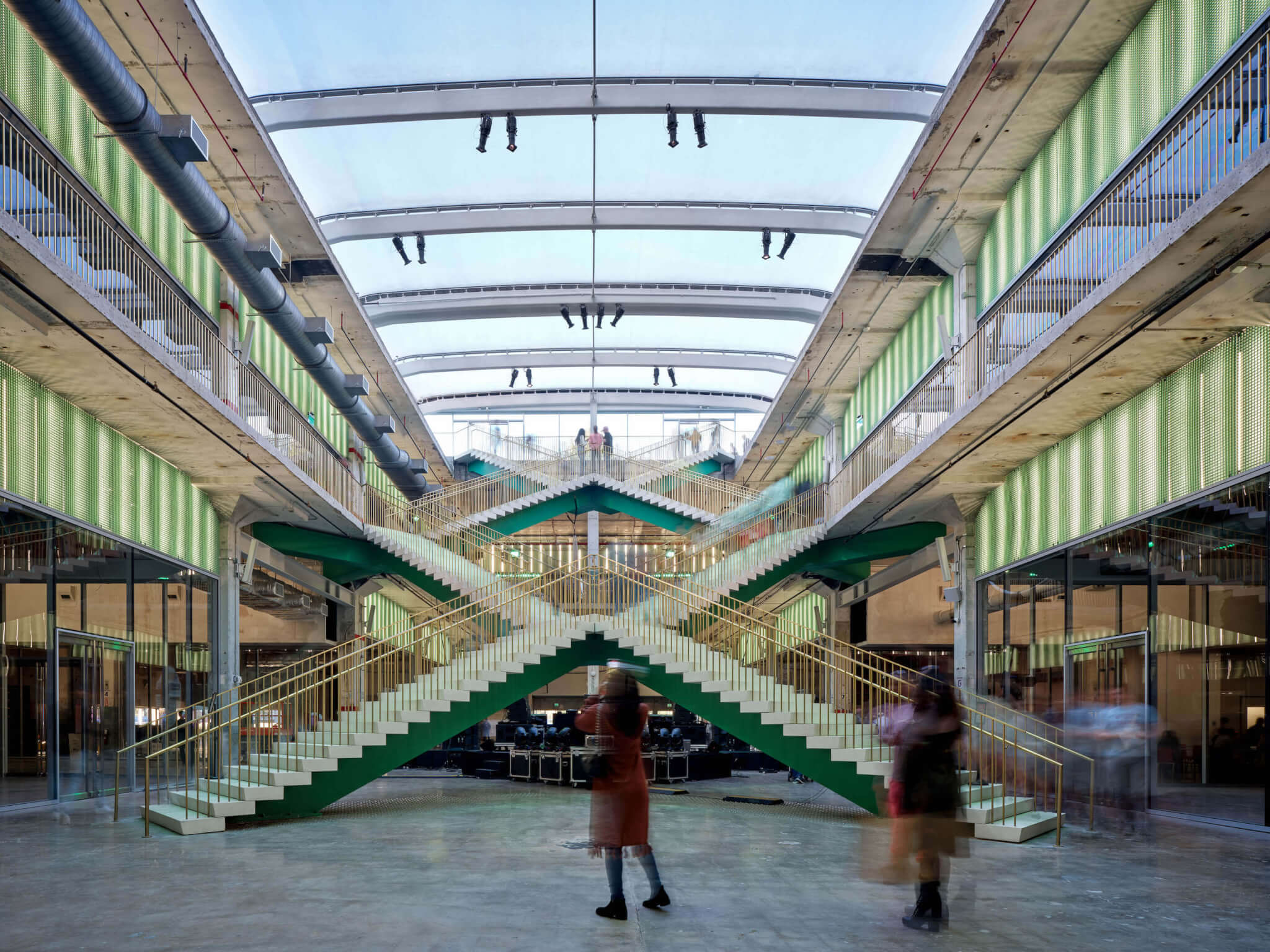
Across the country, smaller post offices have been converted into offices, restaurants, or arts spaces. In Houston, the downtown post office originally designed by Wilson, Morris, Crain and Anderson was renovated by OMA to become POST, a mixed-use destination. The warehouse-like complex also included concealed walkways for the surveillance of postal workers by agents of the Postal Inspection Service, the country’s oldest federal law enforcement agency, which Franklin created weeks after becoming the postmaster general.
Beyond Buildings
In addition to the 30,000-plus post offices the USPS operates across the country, the agency supplements the customer-facing daily operations with a slew of other accouterments and facilities. Walk down any Main Street in the country and you’re sure to pass a blue collection box. The bins designed for collecting letters first appeared on streets in the 1850s and were affixed to lampposts. While the shape and color of the boxes have changed over the years, their purpose and general design concept remains the same. While not architecture in its traditional sense, the boxes are synonymous with post office operations; other examples include mail delivery trucks (including its boxy new model), the signature red mailbox flag, the walls of P.O. Boxes, and its eagle logo.

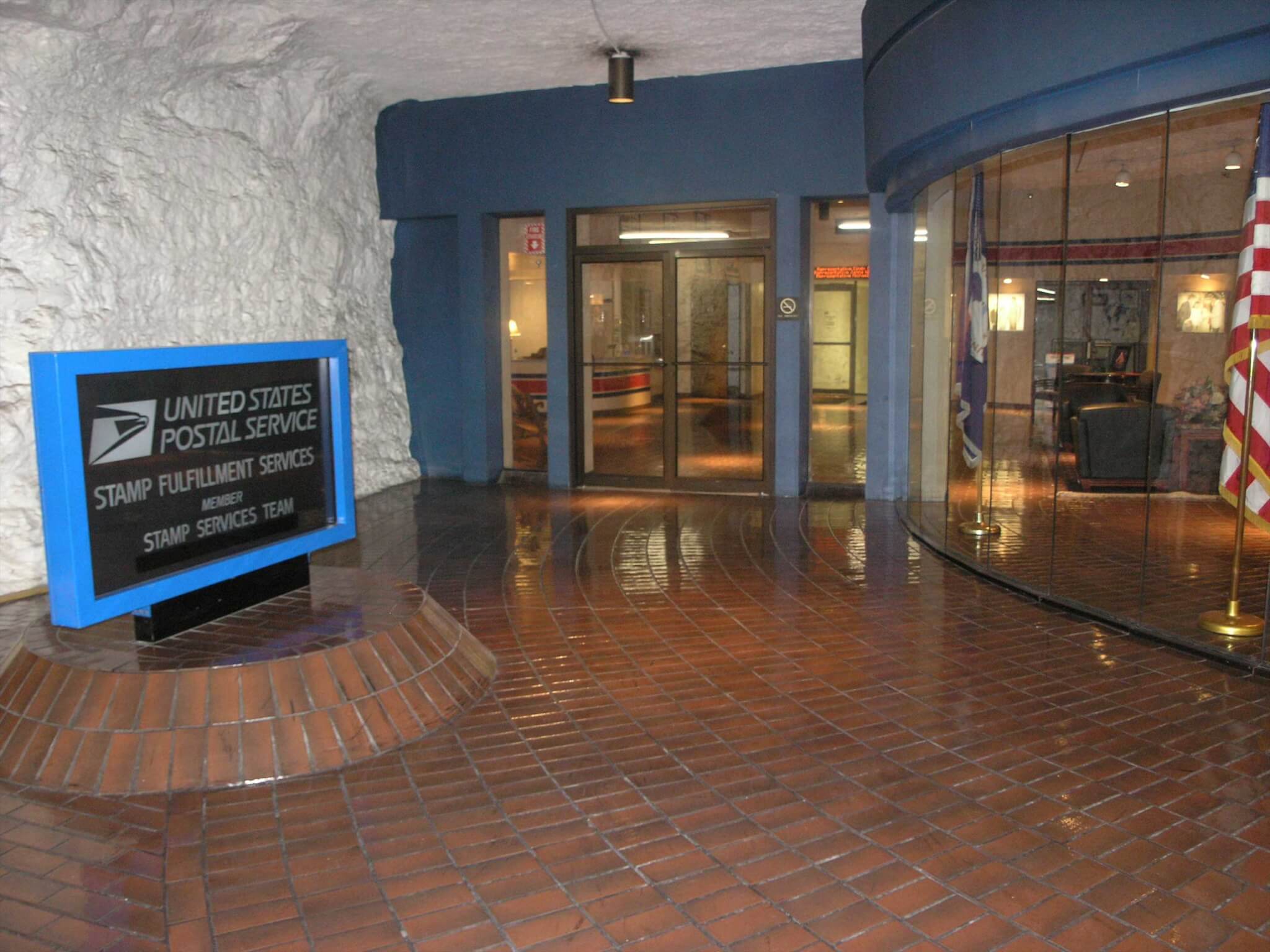
A standout of USPS-operated facilities is SubTropolis, a Stamp Fulfillment Services facility in Kansas City, Missouri, located 150 feet underground in a limestone cave. Meanwhile, the Los Angeles Processing and Distribution Center is the largest USPS mail processing facility in the country. It measures 725 million square feet, and following a recent renovation is powered via a field of photovoltaics that totals over 25,000 panels.
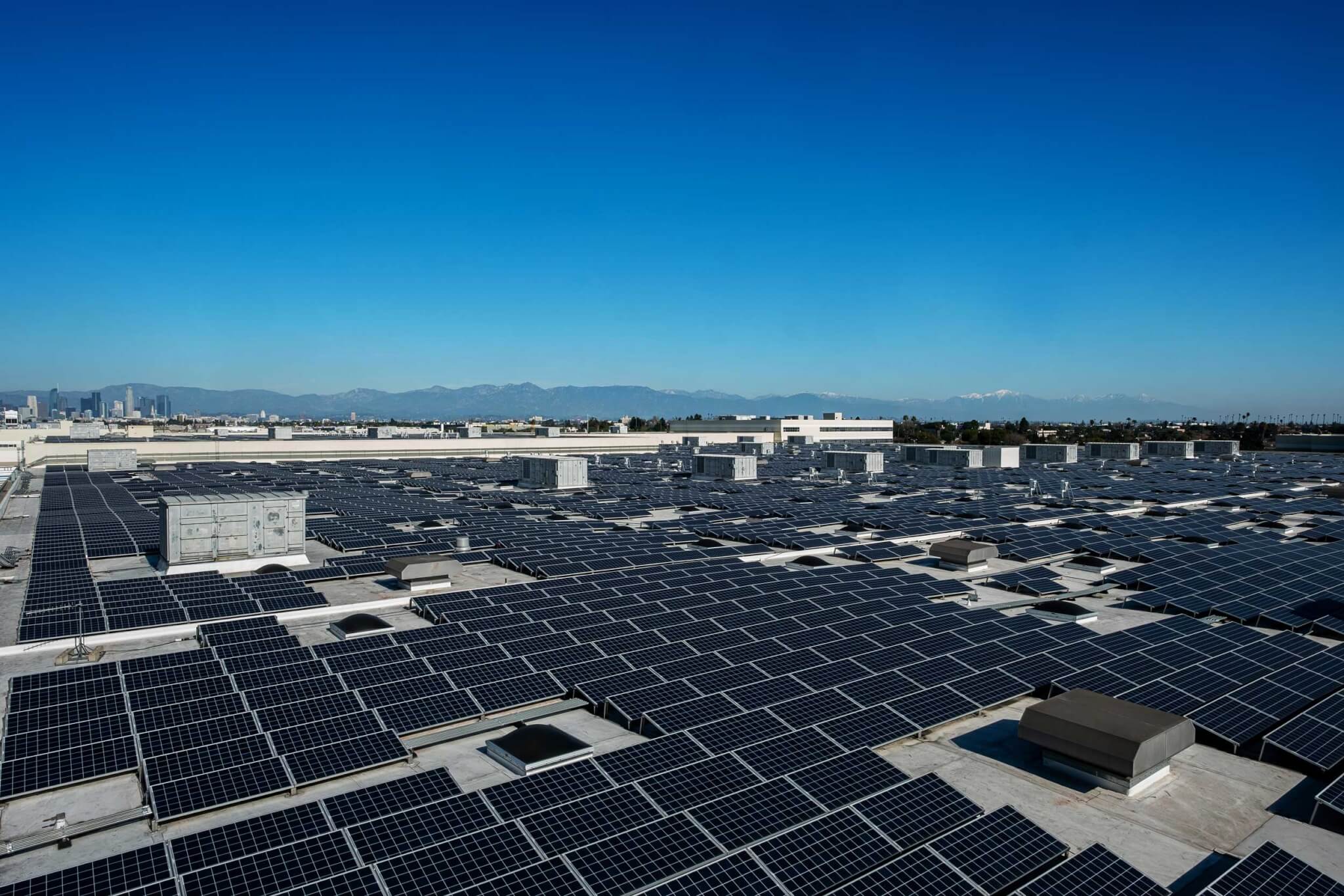
The USPS is making strides to stay relevant in its civic duty, and the public largely views the agency favorably. The institution has long embraced technology: As part of its 2021 Delivering for America plan, it aims to expand its fleet of delivery vehicles, open more charging stations, and dedicate $4 billion to improving retail locations. Though letter writing is increasingly rare and print newspaper subscriptions have dropped off, package services make up the bulk of the USPS’s revenue, due to the popularity of online shopping. Even as the price of stamps rises and discussion of privatization is quieted by a new postmaster general, the country’s 76th, the USPS, 250 years young, continues to be at the center of how the country communicates and does business.
→ Continue reading at The Architect's Newspaper
